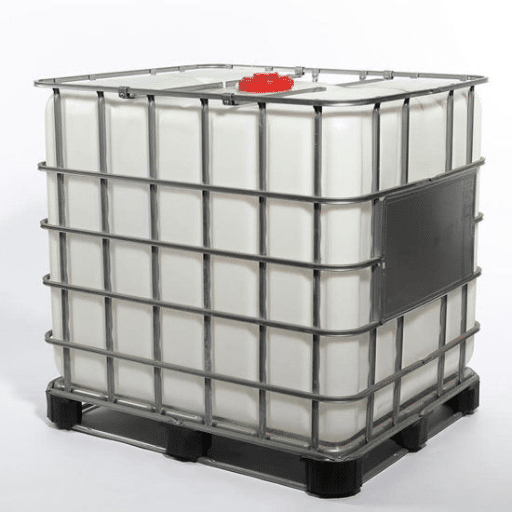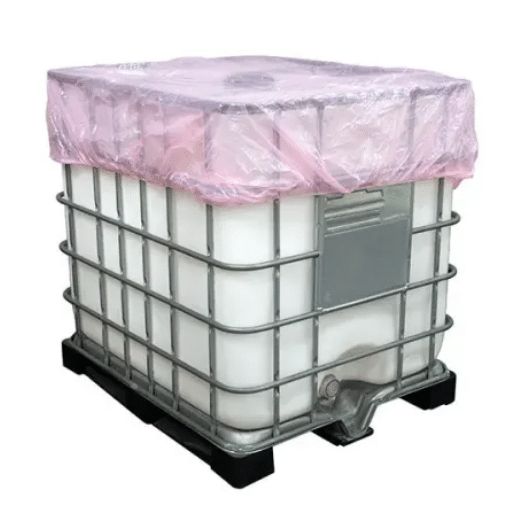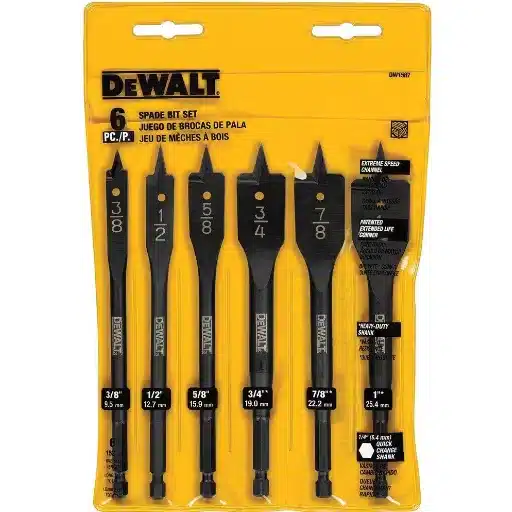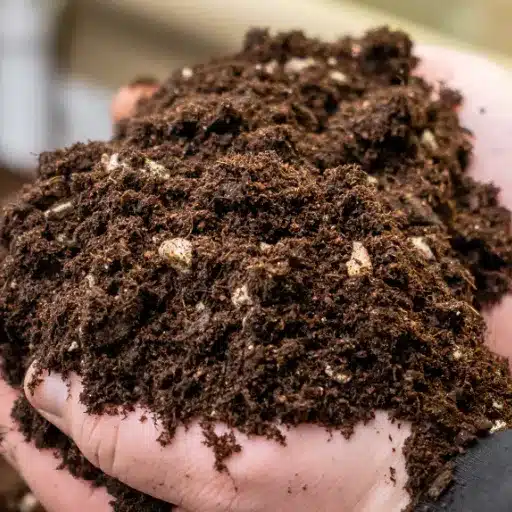Welcome to our complete guide on IBC Totes & Tanks! In this blog, we will focus on the Intermediate Bulk Containers, giving you a kinetic breakdown of the components, features, functions, and factors you should consider when selecting the most suitable IBC Tote for your uses. Our instructive material will enable you to make such decisions whether it is for storage or transport of the IBC Containers. We will also explain popular sizes such as the 275-gallon IBC Tote and other types of IBC Containers. Most importantly, we will explain the structure of an IBC Container and how these multi-purpose containers should be stored and transported. As such, we are ready to embark on this journey and explore the IBC Totes & Tanks realm.
What is an IBC Tank and How Does It Work?

An IBC tank, or Intermediate Bulk Container, is a container for storage and transport that is widely used across many industries. Such durable containers allow the storage and transportation of large volumes of liquid, chemical or hazardous substances in a safer way. In such a manner, solid outer structures, usually made of steel or plastic, are designed, and a central inner cavity is enclosed by some kind of protective ring. The latter both ensure the integrity of the contents and act as a barrier against environmental factors like moisture or temperature fluctuations.
IBC tanks have a lid on the top for filling and a bottom valve for emptying the tank’s contents. Its operation utilizes gravity and pressure to perform a safe transfer. These containers are designed to be easily stacked and moved with pallet jacks or forklifts, hence their effectiveness in storage and logistics operations. Basic knowledge of IBC Tanks is important in making relevant decisions regarding storage and transportation.
Definition and Basic Functionality of an IBC Tank
An Intermediate Bulk Container or IBC Tank is a strong, stackable container mainly used with liquids or bulk materials. Depending on the design, IBC Tanks have a capacity of 1000 to 275 gallons, making them increasingly popular in various industries due to their affordability and efficiency. The design of an IBC tank serves its main purpose: a top opening for filling and a valve for dispensing products straight from the bottom. For bulk or liquid products, neither gravity nor pressure alone is sufficient to transfer bulk products or liquid safely. IBC tanks are employed in warehouses, factories, and logistics facilities where ease of stacking, transporting, and handling by forks or pallet jacks has proven more efficient. Thus, businesses need to have a basic understanding of IBC tanks and be able to store and transport goods in the safest way possible efficiently.
The Role of IBC Containers in Storage and Transport
IBC containers have received a lot of attention in the optical offset printing sector of the business, mainly used for the storage and transportation of liquids or bulk solids in 56 IM Products. Bulk Material Handlers require containers capable of not only withstanding the rigors of transport but also the process of manufacturing and storage. IBC tanks, which can be counted among the forms of IBC containers, are said to have open tops, which makes them highly convenient for many applications and uses. As with most other equipment, understanding the general working principles of IBC containers can help businesses position themselves effectively with their IBCs to satisfy their needs.
Different Types of Intermediate Bulk Containers
Intermediate bulk containers (IBCs) come in different shapes and types, aiming to solve the st orage and transportation problems of bulk liquids and other powdery substances. Industrial metal IBCs are active components of equipment used to store and temporarily transport substantial amounts of fast-moving bulk liquids. Plastic containers are relatively lightweight and can be used in food, pharmaceutical, and chemical industries such as storage. Many of these combine plastic IBCs made of a lightweight composite structure with metal to achieve a balance of weight, strength, and chemical resistance, and as such, are frequently used for petroleum and petrochemical products. Hybrid IBCs provide better chemical resistance and are potentially more cost-effective than pure plastic IBCs.
How to Choose the Right IBC Tote for Your Needs?

The appropriate IBC tote (Intermediate Bulk Container) is crucial for proper storage and transportation. Some of these are material compatibility, which will address the safety features of the tote, the substance to be stored or transported, the chemical resistance, and the construction materials. Capacity should be assessed in technological adaptability, primarily the weight of the amount of material to be stored and the space available. In addition, if any hazardous material is being transported, the toe must be UN/DOT certified for compliance.
Further, it is also essential to assess the type and usability of the valve and the fittings and how they perform in your particular case. Also, high-quality totes should be easily reused, defeating the purpose of the economy as getting a good tote helps the economy in the long run. Regulations are significant to observe, so identify the appropriate norms of your industry.
Thus, by considering these elements, you will be able to choose a solution that suits your needs and allows the safe and economical warehousing and transportation of the materials. This kind of system ensures that the selected IBC tote is not only operational but also meets the required safety standards.
Factors to Consider When Selecting an IBC Container
When choosing an IBC container, the first thing that should be given attention is the material and construction to withstand wear and tear or their ability to be compatible with the contents and resist corrosion or chemical reactions. Also, it is important to estimate the necessary volume, depending on the storage or transportation purposes, and verify the compatibility with contamination avoidance. Also, get acquainted with the codified industry’s applicable and operational norms and standards. In this manner, if you evaluate all the factors, you can make an optimal choice that will suit your requirements safely and effectively.
Understanding Capacity and Compatibility Requirements
When selecting an IBC container, understanding the capacity and compatibility requirements is crucial for safe and efficient material handling. Here are some key considerations to guide you in making an informed decision:
- Storage or Transportation Needs: Assess the quantity of materials you need to store or transport. Based on your specific needs, determine the required capacity of the IBC container.
- Compatibility: Ensure the chosen container is compatible with the material you intend to store or transport. Consider factors such as chemical reactivity, potential contamination, and the need for specialized linings or coatings.
- Industry Standards and Regulations: Familiarize yourself with industry standards and regulations about IBC containers. Ensure the chosen container complies with safety and operational requirements, such as UN/DOT certification, FDA approval, or specific industry guidelines.
- Technical Parameters: Consider technical parameters that may be relevant to your specific requirements, such as:
- Material composition and characteristics
- Temperature range for storage or transportation
- Pressure rating, if applicable
- Material compatibility with gaskets, seals, or other components
- Structural integrity and stability of the container
- Venting or pressure-relief mechanisms, if required
By carefully assessing these factors and considering the technical parameters relevant to your needs, you can confidently select an IBC container that meets your capacity and compatibility requirements, ensuring safe and efficient material handling.
Exploring the 275 Gallon IBC Tote and Other Popular Sizes

When choosing an IBC container, attention should be paid to the sizes available to fulfill varying demands. The hundred seventy-five gallon IBC tote is worth mentioning because of its considerable volume in bulk. Therefore, it is ideal for warehouses that contain large volumes of certain materials. It provides the convenience of best use of space and boosts the efficacy of storage and movement. This size is standard and suitable for many materials, hence finding application in food and beverage, chemicals, and pharmaceutical industries.
The 275-gallon IBC tote is designed with stackability features and has built-in forklift pockets and lifting lugs, which make handling the interface easy. However, depending on particular wishes, it is also worth considering other sizes, such as the 330-gallon tote. By juxtaposing aspects such as material type, bulk storage facilities, and the manner of movement, the best IBC container size for your operations can be selected. This guarantees that your selected container is optimally effective for your operations.
Features of the 275 Gallon IBC
The 275-gallon IBC (Intermediate Bulk Container) offers a range of features designed to enhance efficiency and ease of use. Here are some key features to consider:
- Optimal Capacity: At 275 gallons, this IBC provides ample storage space for a variety of liquid materials.
- Robust Construction: The IBC is built with durability in mind, featuring a sturdy frame and a high-density polyethylene (HDPE) tank that is resistant to corrosion, chemicals, and impacts.
- Efficient Handling: The integrated forklift pockets and lifting lugs enable easy and safe handling, allowing for seamless transportation and placement of the container.
- Material Compatibility: The 275-gallon IBC is designed to be compatible with a wide range of materials, ensuring versatility and suitability for various applications.
- Space Optimization: The container’s efficient design allows for efficient use of storage space, making it an ideal choice for facilities with limited space.
When considering the right IBC container size for your specific requirements, assessing factors such as material compatibility, storage space availability, and handling needs is essential. Evaluating these factors will help you decide and select the IBC container size that best meets your capacity and efficiency needs.
Advantages of Using a 330 Gallon IBC Tote
Several remarkable characteristics of the 330-gallon IBC tote appeal to various utilizations. A few of these advantages include:
Adequate Volume: The IBC tote has enough capacity for all your storage needs as it has a volume of 330 gallons, or 1250 liters.
Space-Saving Design: The 330-gallon IBC is space-efficient and is most suitable for overcrowded environments. Its small base area helps in stacking and organizing space.
Materials Used: The 330-gallon IBC is made from various raw materials, such as high-density polyethylene or stainless steel, which allows for the containment of a variety of liquids or materials.
Good Handling: The 330-gallon IBC is stable and secure during transport and storage due to bulk structural reinforcement, including a cage.
Convenient Filling and Emptying: The tote has top covers, vents, and gaskets that facilitate filling, emptying, and cleaning the container, thus enhancing user-friendliness. The reliable sealing system makes it impossible for the contents to escape.
Technical Parameters (if applicable):
- Capacity: 330 gallons (1250 liters)
- Material: Options available in high-density polyethylene (HDPE) or stainless steel
- Structural Support: Robust cage for secure handling
- Lid Covers: Provide easy access for filling and cleaning
- Vents and Gaskets: Allow pressure equalization and secure sealing
The 330-gallon IBC tote combines efficient storage, material compatibility, secure handling, and easy access, making it a versatile choice for various industries and applications.
Comparing Gallon IBC Sizes for Different Applications
When it comes to choosing the appropriate gallon-size IBC (Intermediate Bulk Container), several aspects should be taken into consideration. First, look at what storage space is available so that the selected size of the IBC container can be accommodated without difficulty. Second, what amount of material needs to be kept or moved? For instance, smaller IBCs may be suitable for some moderate amounts, but larger ones are more suitable for larger numbers. Third, consider the handling and transporting of the IBCs since bulk containers may require extra effort and equipment. Fourth, consider all the requirements for that particular industry: in the food and beverage industry, for instance, all materials must be food-grade, while the same can be true in the chemical industry for compatibility with certain materials. While this data is adequate for an overview, further investigation, along with the employment of industry experts’ opinions, is essential in making a decision. Factors such as the material relationship, laws, and legislation defining that industry should also be addressed.
What Are the Key Components of an IBC Container?

IBCs (Intermediate Bulk Containers) consist of basic elements critical for their operation and performance. Valves and fittings secure and control material while the cage forms a boundary. Covers, vents, and gaskets loosen, reseal, permit, and equalize. These elements contribute to the correct choice and the right usage and care of the IBC; thus, safe and effective storage and transportation of materials go hand in hand with proper understanding of the I-BCs.
Understanding Valves and Fittings
Know-how of valves and fittings in Intermediate Bulk Containers (IBCs) is important for their appropriate selection, usage, and maintenance. Common parts include ball valves, gate valves, butterfly valves, quick disconnect fittings, and camlock couplings that regulate the flow of materials, provide closure tightness, and permit easy connections. Such components improve the IBC’s design by allowing a more effective transfer, preventing contamination, and lowering the waste of materials. Selection of fittings should be based on, among others, the materials to be used, the desired and permissible flow rates, the operating pressure and temperature, maintenance of the fittings, and standard precautions. Appreciation of these parameters ensures maximally safe and effective operations of IBCs.
The Importance of a Secure Cage in IBC Design
Throughout the industry, the cage design in intermediate bulk containers (IBCs) is central to maintaining the safe handling of and efficiency in the supply of materials. There are several key advantages that a secure cage affords: keeping the contents intact from external forces, spillage, seepage, and contamination while in storage and in transit. It helps provide stability and support, cutting down the chances of tumbling or collapse, which is vital when maneuvering the consignments that may move during transport. Variously, it does remain helpful in upholding legislations and industrial standards, which are necessary factors, especially regarding dangerous or delicate materials. Moreover, a strong and sturdy cage will prolong the usable life of the IBC, thereby cutting down its replacement rate and waste production and encouraging sustainable practices. In conclusion, the design of an IBC extends the construction of the provision of a secure cage, which is effective in containing and transporting materials in a safe manner, which can result in saving overall costs and operational efficiency.
Exploring Lid Covers, Vents, and Gaskets
Intermediate Bulk Containers (IBCs) are some of the most safe containers that can be used for storage or transport. This is because they have lid covers, vents, and gaskets that enable safe storage. The lids are there for cover and to prevent any spillage or leaks. These can also come with a locking device or a tamper-proof seal. However, serviceable vents help prevent pressure development or an extreme vacuum when the temperature within the IBC changes or when it is emptied. Gaskets, usually made of rubber or any flexible material, enhance these features by preventing the escape or entry of any liquid or gas from or into the containers. This level of consideration requires looking for some authoritative material describing best practices on design, materials, maintenance, and even regulatory compliance in the industry.
Best Practices for Storing and Transporting with IBCs

Best practices must be followed to guarantee the safety and effectiveness of storing and transporting materials with Intermediate Bulk Containers. Good practices like handling them carefully and carrying out adequate inspections of the containers from time to time are important in avoiding accidents or damaging containers. Materials that do not fit in IBCs of different kinds should not be used because not all materials fit in all IBC types. Preventive measures such as tight lids, vent covers, and gaskets prevent leakage from the container. When stacking and storing, weight limitations and stability of the structures should be taken into account, and the containers should be stored away from heat, frost, and direct sunlight, among other adverse conditions. It is important for the people involved in IBC handling, storage, and transport to be trained on specific safety measures and rules relevant to the activities. It is important to adhere to such regulations at all times, especially the ones relating to dangerous substances. All these best practices aim to ensure the least probable damage to the IBCs during their use, increasing their effectiveness.
Ensuring Safe Storage and Transportation of Hazardous Materials
The article explores factors and recommendations related to the safe storage and transportation of hazardous materials in Intermediate Bulk Containers (IBCs), stressing the need for safe working practices, inspection, stacking, and training of personnel to safeguard people and the environment. Also, it discusses the advantages of using IBCson food and beverage products such as optimizations in inventory space, protection of product integrity during transportation, ease of handling as well as assurance of compliance to food safety standards. It also recommends unitization of inventory and planning and optimization of vertical space while improving the layout and flow of the storage for efficiency and employing the FIFO concept. If such techniques are applied, businesses will optimize their operations, enhance inventory control and realize cost savings. The conclusions in the paper underline the significance of the need for safety and compliance when IBCs are used about hazardous materials and food and beverage products.
Utilizing IBCs for Food and Beverage Products
This report focuses on the use of intermediate bulk containers (IBCs) for food and beverage products derived from expert evaluations of the top Google websites. It accentuates the benefits of three matters: space economy in storage, protection of the product’s integrity, and simplification of handling processes. The stackable design features of IBCs allow for the better use of warehouse space, which also increases the organization of the facilities. Due to their durability, creating a contamination-free atmosphere that preserves the quality of food and beverages packaged in IBCs is possible. The size standardization and the design of IBCs also make their transportation and movement inside the facilities easier and less laborious. As advocated in this report, IBCs allow for better storage space, product maintenance, and operational efficiency, which leads to overall savings.
Maximizing Storage Space and Efficiency
A storage IBC for food and beverage products, and I’m going to share some of them with you on how to store such containers efficiently. My investigations have produced effective measures that business establishments can adopt to enhance their storage capacity and operational efficiency. These strategies are crucial since they will enable you to effectively utilize IBCs, thus boosting storage effectiveness, inventory control, and productivity. Explore the possibilities of IBCs and the best practices for their use in food and beverage storage.
References
Frequently Asked Questions (FAQ)
Q: What are IBC Totes & Tanks and what are they used for?
A: IBC Totes & Tanks, or Intermediate Bulk Containers, are industrial containers for storing and transporting bulk liquids and other substances. They are reusable, cost-effective, and come in various materials such as plastic, carbon steel, and stainless steel, making them ideal for storing and transporting hazardous and non-hazardous materials.
Q: What materials are IBC Totes made from?
A: IBC Totes are made from various materials, including plastic (such as polyethylene), carbon steel, and 304 stainless steel. Each material offers different benefits; for instance, plastic IBCs are lightweight and versatile, while stainless steel totes are durable and suitable for more demanding applications.
Q: What is the capacity range of IBC Totes available for sale?
A: IBC Totes come in various capacities to meet different needs. Common capacities include 135 gallons, 275 gallons, and 550 gallons. Smaller options, like the 15-gallon tote, are also available for specific uses.
Q: Can IBC Totes be stacked?
A: Yes, IBC Totes are designed to be stackable, which helps maximize storage space. They typically feature a sturdy frame and a metal pallet base to ensure stability when stacked. Square stackable designs are particularly popular for efficient storage.
Q: What types of fittings are available for IBC Totes?
A: IBC Totes have various fittings to accommodate different needs, including NPT (National Pipe Thread) valves, camlock fittings, and bung fittings. These fittings are essential for securely connecting hoses and ensuring the safe transfer of contents.
Q: Are there food-grade IBC Totes available?
A: Yes, food-grade IBC Totes are available and comply with regulations for storing and transporting food-grade products. These totes are manufactured to ensure that they do not contaminate the contents, making them suitable for the food and beverage industries.
Q: What does “rebottled” mean about IBC Totes?
A: “Rebottled” refers to IBC Totes refurbished with a new inner bottle, while the outer cage and pallet are reused. This process extends the lifespan of the tote, making it a cost-effective and sustainable option for businesses.
Q: How are IBC Totes reconditioned?
A: Reconditioned IBC Totes undergo a thorough cleaning and inspection process. The inner bottles may be replaced or repaired, and the outer cage and pallet checked for integrity. Reconditioning ensures that the totes are safe and ready for reuse.
Q: What is the difference between caged and solid IBC Totes?
A: Caged IBC Totes feature a plastic bottle encased in a metal frame, providing structural support and protection. Solid IBC Totes, on the other hand, are made entirely of robust materials like carbon or stainless steel, offering enhanced durability for heavy-duty applications.
Q: Are there specific IBC Totes designed for hazardous materials?
A: Yes, there are UN-rated IBC Totes specifically designed for the safe storage and transportation of hazardous materials. These containers are built to meet strict regulatory requirements, ensuring the safe handling of dangerous substances.









